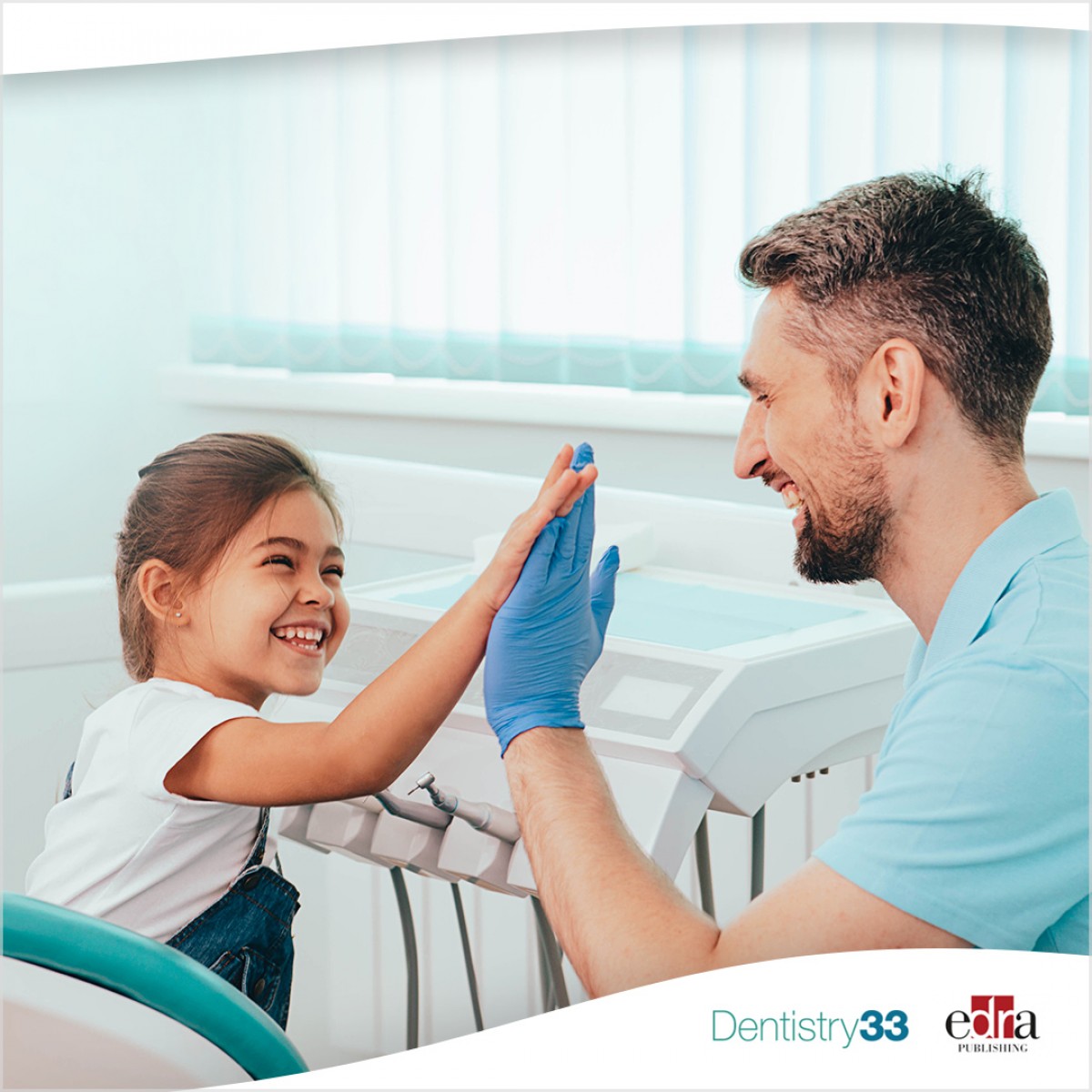
MIH, a problem that can greatly affect the lives of patients
By Arianna Bianchi
Molar and incisor hypomineralization (MIH) is a well-recognized enamel quality defect, which can involve one to four permanent first molars, often the permanent incisors.
MIH is associated with hypersensitivity, difficulties in obtaining adequate anesthesia, atypical carious lesions and cosmetic problems that are concerning to the patients who suffer from it.
The etiology is multifactorial, and MIH is thought to be the result of the action of several factors that influence enamel formation during the pre-, peri- and immediately post-natal phases (up to about three years of age).
Recently, some studies suggested that genetic or epigenetic modifications may determine the development of MIH. The treatment of teeth affected by MIH is complex and providers must factor in the patient's cooperation, the stage of dental development and the severity of the enamel defect.
Materials and methods
In a systematic review published in June 2021 in the European Archives of Paediatric Dentistry, the authors considered all randomized controlled trials (RCTs), including cluster RCTs, controlled (non-randomized) trials, case-control, cross-sectional and longitudinal studies, while case series, with a minimum of 10 patients, were included only with the consent of all authors. The team did not consider animal or in vitro studies.
All selected studies had participants under the age of 18 and all possible interventions performed for teeth affected by MIH were considered.
Regarding the outcomes, due to the wide variety of treatment options and the different outcomes established by the numerous studies, the success of the intervention was considered as the main outcome measure.
Secondary outcomes were intervention longevity, annual failure rate, quality of life, aesthetics, function, adverse events and patient, parental and dentist satisfaction with the outcome.
Results
Researchers identified 6,220 articles, resulting in 4,499 after removing the duplicates. Seventy-seven studies then underwent a full textual review, and 34 of these met all inclusion criteria for the systematic review. For molars affected by MIH, among the various studies selected for this systematic review, a total of 1711 teeth were examined.
Studies have used different techniques to treat teeth affected by MIH, such as resin-based fissure sealants, glass ionomer restoratives, “classical” or polyacid-modified composites, amalgam restorations, crowns made in the laboratory or indirect restorations in composite material.
For the anterior elements affected by MIH, on the other hand, despite the incisors being the subject of greater aesthetic interest, only 105 dental elements were considered, since many studies examined focused the research more on the diatoric elements than on the anterior ones.
In the studies considered for this review, three investigated resin infiltration while one evaluated the efficacy of two different microabrasion approaches for the treatment of MIH.
Some studies have investigated the reduction of hypersensitivity for teeth affected by MIH, considering a total of 402 elements. Various methods have been used, such as 5% fluoride varnish (also in combination with low laser therapy), a 10% CPP-ACP cream (casein phosphopeptide complex - amorphous calcium phosphate), 1000 ppm fluoride toothpastes, a toothpaste with 8% arginine and calcium carbonate.
Conclusions
According to the data obtained from this systematic review, for molars affected by MIH there is convincing evidence mainly supporting the use of resinous fissure sealants, pre-formed metal crowns and direct composite resin or laboratory-fabricated restorations, while amalgam restorations should be avoided.
For the anterior teeth, however, there is evidence to support any type of intervention. Some studies have demonstrated the possible beneficial use of products containing CPP-ACP for the treatment of teeth affected by MIH, especially to reduce the effects of hypersensitivity induced by MIH itself. According to the authors, further high-quality studies are needed with more participants, longer follow up periods and more clinically relevant and appropriate outcome measures in the management of MIH-affected teeth.
Somani, C., Taylor, G.D., Garot, E. et al. "An update of treatment modalities in children and adolescents with teeth affected by molar incisor hypomineralisation (MIH): a systematic review." Eur Arch Paediatr Dent 23, 39–64 (2022). https://doi.org/10.1007/s40368-021-00635-0.
 Related articles
Related articles
Editorials 12 September 2025
1 in 3 Florida third graders have untreated cavities – how parents can protect their children’s teeth
Company will showcase the toothbrush solution at the American Academy of Pediatric Dentistry conference in Denver.
Products 15 April 2025
Families in Oceanside and the greater San Diego region now have greater access to essential pediatric dental care with the recent opening of a new Children’s Choice Dental Care office.
Patients’ and parents’ perception of malocclusion are important in determining orthodontic treatment demand, motivation, and cooperation.
News 07 February 2025
Benevis Highlights Emergent Oral Health Coverage Needs for Children’s Dental Health Month
Benevis has issued a call to action to expand Medicaid and Children’s Health Insurance Program (CHIP) eligibility and ensure vulnerable U.S. children continue to receive coverage for dental health...
 Read more
Read more
Editorials 10 October 2025
With proud smiles and crisp white coats, ninety-three learners from the DDS Class of 2029 and the International Dentist Pathway Class of 2028 marked the start of their dental careers at the UCSF...
Periodontology 10 October 2025
Continuous professional development (CPD) in Periodontology refers to the overall framework of opportunities that facilitate a life-long learning practice, driven by the learner-practitioner and...
TheraBreath, the #1 alcohol-free mouthwash brand in the U.S.*, has introduced a new line of dentist-formulated, clinically tested toothpastes designed to support professional oral care...
News 10 October 2025
New officers and trustees were installed at the Minnesota Dental Association’s Leadership Conference on September 19 in Minneapolis.
News 10 October 2025
Smartee Denti-Technology today announced that Professor Gang Shen, its Chief Scientist and Executive President of TaiKang ByBo Dental, has once again been named to the World’s Top 2% Scientists...















